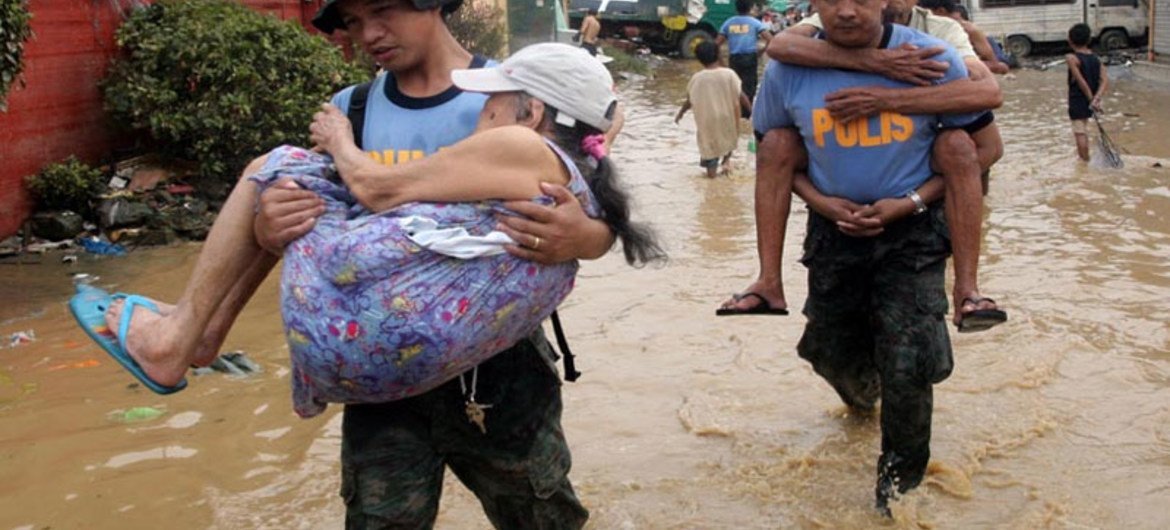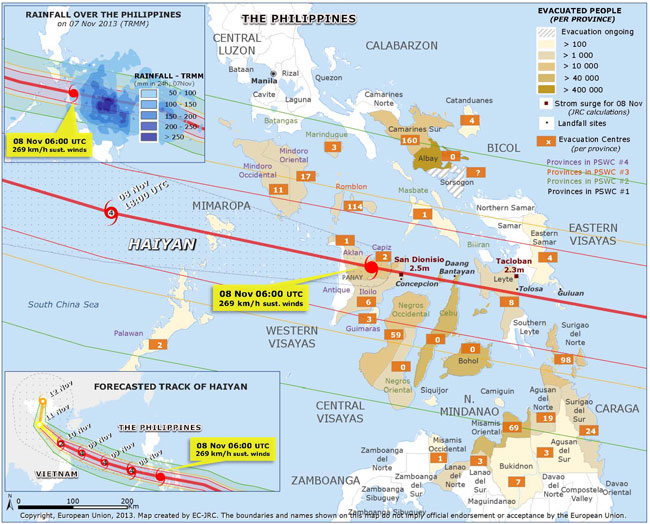As super typhoon Haiyan hits Philippines, UN and partners prepare to provide support
“We are working closely in support of Government and local authorities to assess the life-saving needs of the people affected by this typhoon,” said Julie Hall, acting Resident and Humanitarian Coordinator in the Philippines.
The super typhoon, known locally as Yolanda, has ripped roofs off housing, uprooted trees and affected businesses, but the full extent of the damage will not be known until the storm has passed.
According to media reports, it is one of the strongest storms ever recorded, with sustained winds of 295 kilometres per hour (kph), placing it above the 252 kph threshold for a Category 5 hurricane, the highest category on the Saffir-Simpson hurricane wind scale. Three people have reportedly died, and seven others have been injured.
Haiyan is expected to travel over eastern, central and western Visayas, Bicol and Southern Tagalog, which have a combined population of 29.4 million people. The World Meteorological Organization (WMO) described the typhoon as “violent” but said it is expected to weaken slightly on a trajectory towards Viet Nam.
The Government has taken preventative steps to save lives by moving people from coastal and low-lying areas known to be prone to flash flooding and landslides. The UN Humanitarian Country Team and partners have complemented these efforts by pre-positioning stocks to respond to life-saving needs of affected people.
“The Humanitarian Country Team and partners are fully prepared to support and assist the Government in response to this latest typhoon,” said Ms. Hall. “We will continue to support their efforts as we wait to see exactly the extent of the damage caused by Typhoon Haiyan.”
The World Food Programme (WFP) estimates that 2.5 million people will require immediate assistance in the aftermath of the typhoon, and said it would participate in the Government-led assessment.
Haiyan is the third major crisis to hit the Philippines in just two months. In October, the Bohol earthquake affected more than 3 million people, triggering landslides engulfing entire homes, ripping apart bridges and tearing down centuries-old churches. Seven cities in three different provinces were initially affected. In September, tens of thousands were forcibly displaced by armed clashes in Zamboanga City in the southern part of the country.


